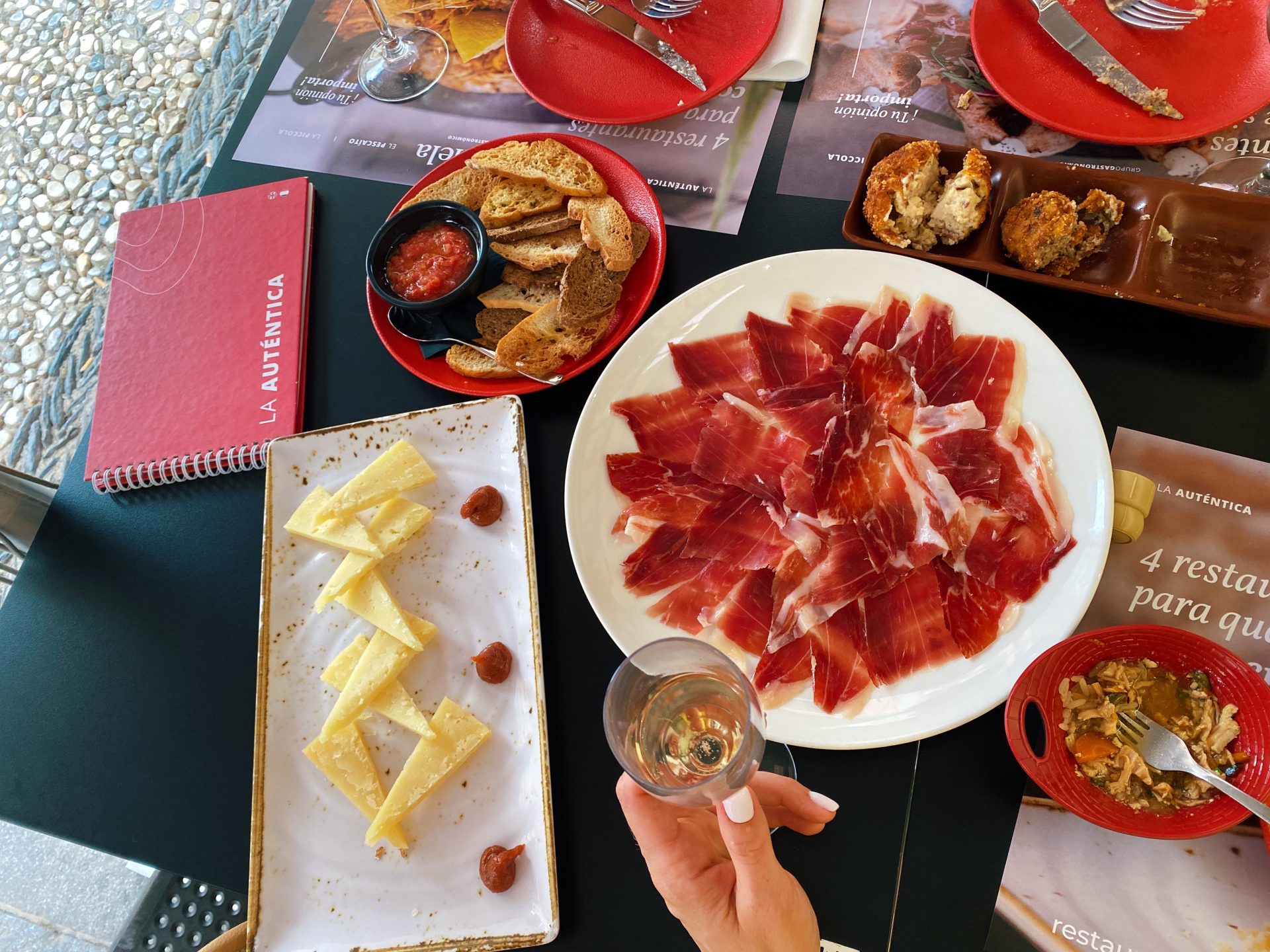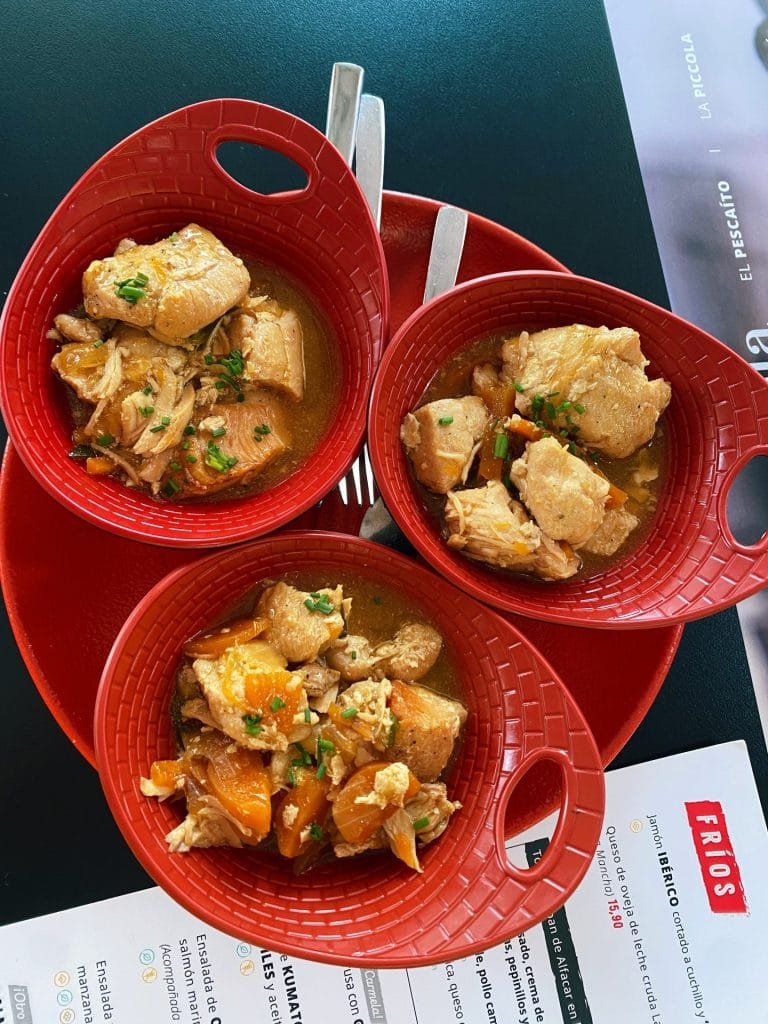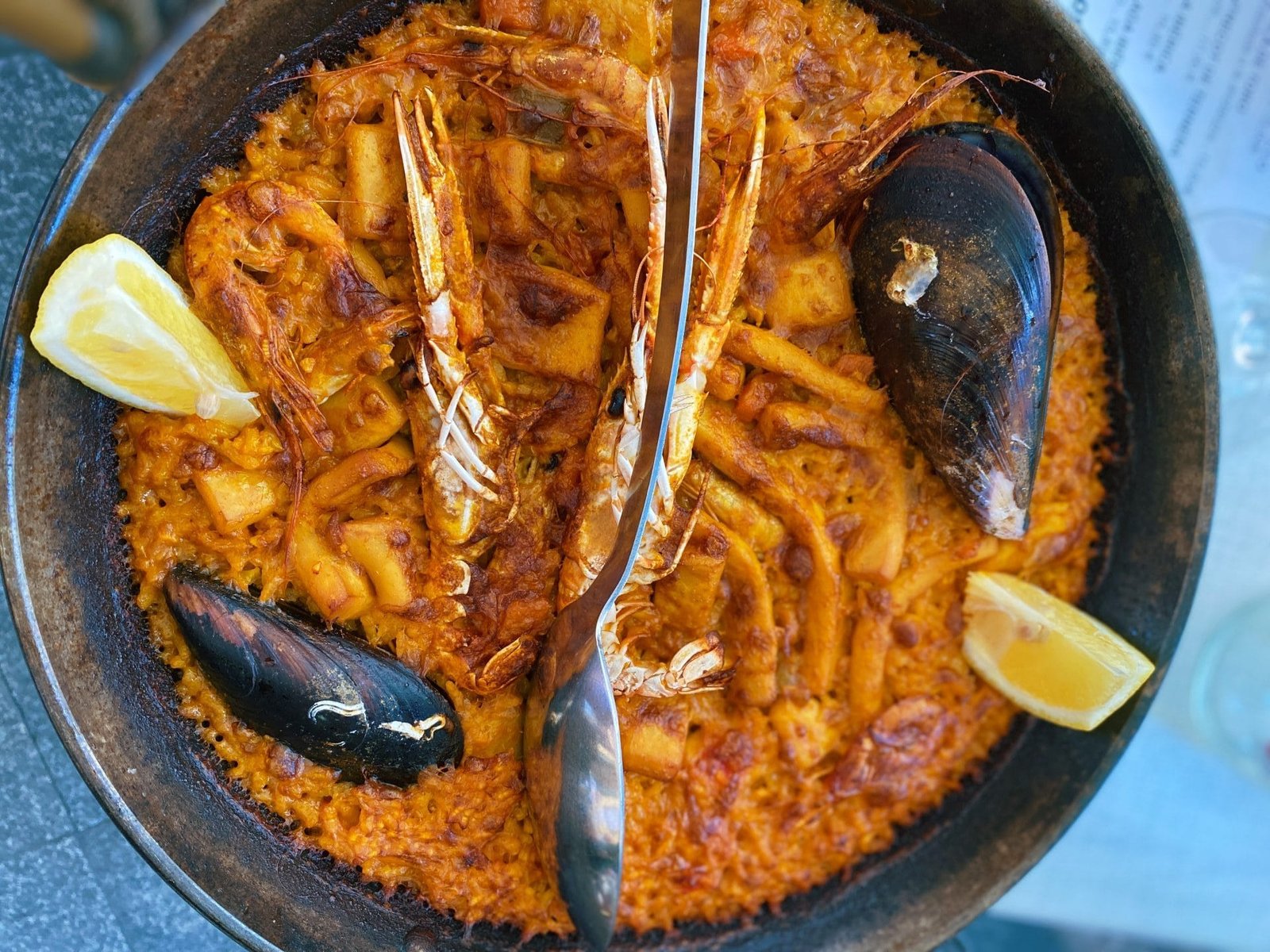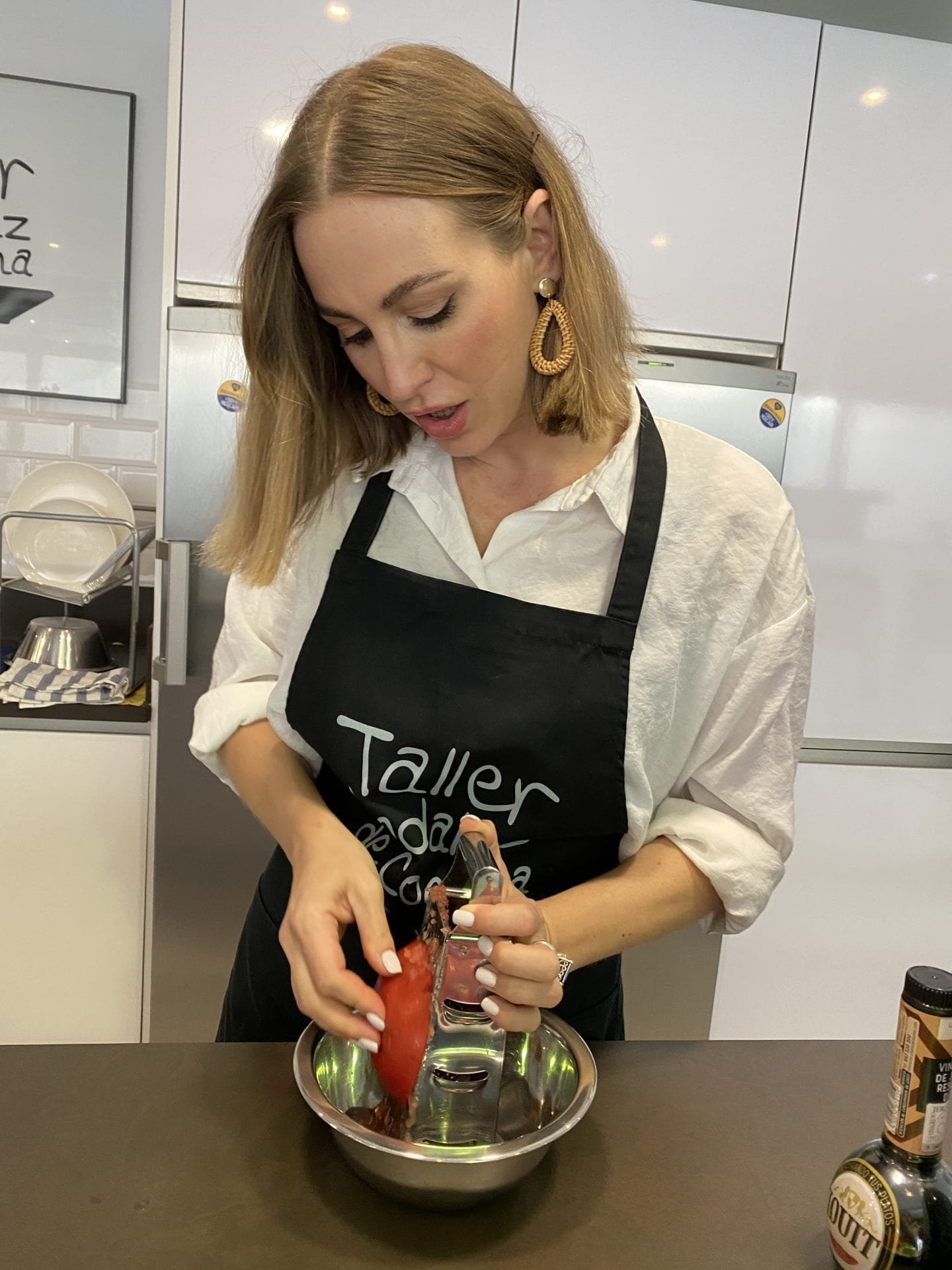
Andalusian Food Guide: Best Dishes try in Southern Spain
Andalusian food is some of the best in Europe, thanks to the combination of fresh ingredients, influences from Moors, Sephardic and Phoenicians, and the huge variety. Tapas are a big part of Andalusian cuisine, and there are many different types to try. One of the most popular is tortilla de patatas, a potato omelet found in most bars and restaurants. Another popular tapa is jamón ibérico, a type of cured ham from the Iberian Peninsula. Andalusian food is also famous for its seafood dishes, such as paella and squid in its own ink. If you’re looking for something sweet, you should try one of Andalusia’s traditional desserts, such as flan or turrón. So what are you waiting for? Head to Andalusia and start exploring its delicious food!
Why Andalusian food is a must-try for every foodie
What makes Andalusian food special is that each province and town has its own typical dishes. This is due to the wide range of cultural influences that have been present in Andalusia throughout its history. These influences include the Romans, Moors, Jews and Gypsies. This diversity of cultures has resulted in various flavors and ingredients being used in Andalusian cuisine. Some of the most popular dishes include gazpacho, paella and argonauts. Andalusian food is also known for its use of fresh, local ingredients. This is evident in the popularity of seafood dishes such as squid in garlic sauce and fried fish. Of course, foodie tours and cookign classes are one of the top things to do in Andalusia.
Geographical variety
The incredible geographical variety within the region makes Andalusian cuisine very special.
Jaen is famous for its mountains and olive trees, Huelva and Cadiz for its tuna and seafood, Sevilla for its qualitative Iberian pork meat, Malaga for its abundant fish… The list goes on. This variety reflects Andalusia’s long history of being a crossroads for different cultures – from the Phoenicians and Greeks to the Romans and Moors. All these cultures have left their mark on the region’s cuisine, making it one of the most diverse in Spain. So next time you find yourself in Andalusia, sample as much of the local fare as possible. You love it!
Andalusian Tapas
Andalusian tapas are more than just a meal—they’re a way of life. This iconic aspect of Spanish cuisine originated in Andalusia, and it’s easy to see why it’s so popular. There is no better way to sample a variety of dishes than a tapa.
Tapas are also a great way to socialize with friends and family.

Types of Spanish tapas
When it comes to Spanish tapas…the options are endless! This is why it’s hard to define exactly what they are. But Andalusian tapas typically involve small bites of food served on toothpicks or small plates. Andalusian tapas are usually simple dishes , packed with flavor. Some popular Andalusian tapas include patatas bravas (potatoes in a spicy tomato sauce), jamon serrano (cured ham), and gambas alajillo (shrimp in garlic sauce).
Looking for something a little heartier? Order a plato de Jamón Ibérico de Bellota.
Spanish tapas: Mojama
Mojama: it’s salty, it’s strong, and it’s definitely an acquired taste. But for those who have developed a taste for this salt-cured tuna, there’s no going back. Mojama hails from Andalusia, where it is often served as a tapa. Try pairing a thin slice of it with some regañás (crunchy crackers typical of the region). The contrast between the Mojama’s salty flavor and the Regañás’ crunchiness is truly something to behold. So next time you’re in Andalusia, don’t be afraid to step outside your comfort zone and try Mojama. Who knows? You might just develop a taste for it.
Spanish tapas: Caracoles
Caracoles, or snails, are a popular dish in southern Spain, where they are boiled in seasoned broth and served in their shells. Caracoles is a traditional Spanish tapa, or small dish typically served as an appetizer. If you want to try something new and delicious in Seville, try Caracoles!
Andalusian cold soups
Andalusia is famous for its hot, sunny summers. But when the temperatures soar, Andalusians know there’s nothing better than a light and refreshing bowl of one of the region’s signature cold soups. These soups, made with various fresh ingredients, are the perfect way to cool down on a hot summer day. Andalusian cold soups come in wide different varieties, but some of the most popular include gazpacho, salmorejo, and ajoblanco. Each soup has its own unique flavor and texture, but they all share one common trait: they’re incredibly delicious. So next time you’re feeling hot and bothered, reach for a bowl of Andalusian cold soup. Trust us, it’s the perfect antidote to the summer heat.
Andalusian Gazpacho
Andalusian Gazpacho is a refreshing cold soup made of raw vegetables such as tomatoes, peppers, cucumbers, and garlic. This traditional dish is a favorite in Spain and you can find it in every town and village. The Andalusian Gazpacho recipe is simple to make. You can tailor to your liking by adding or removing ingredients such as onion, bread, or garlic. Andalusia’s famous gazpacho soup is a must-try for any traveler to the region!
How to make traditional Andalusian gazpacho?
The dish is traditionally made with tomatoes, garlic, bread, olive oil, vinegar, and water. However, there are now many variations of the dish, with different ingredients used to create different flavors. Here is a great idea: try varying the original recipe by adding strawberries, melon, mango or mint.
Each restaurant in Andalusia has its own recipe for Andalusian Gazpacho. It is always a delight to try a new version of the dish. Andalusian Gazpacho is a must-try for anyone visiting Andalusia – it is truly a taste of the region.
Salmorejo
Salmorejo is a traditional Spanish dish from the city of Cordoba. Now, you can find it on menus all over Spain, and the people of Cordoba are rightfully proud to be at the dish’s point of origin. Salmorejo is a Moorish invention, and in its earliest form, it was simply a blend of garlic, bread, salt, oil, and vinegar. The dish wasn’t given its now-signature twist of Tomato until after the Europeans had “discovered” the Americas. And while Salmorejo may have humble beginnings, it has since become one of Spain’s most beloved dishes.
Ajo Blanco
Ajo Blanco is a traditional Spanish soup that is simple yet incredibly flavorful. The base of the soup is delicious, creamy almond milk. To this, garlic, breadcrumbs, and olive oil are added. The end result? A thick and creamy soup. Ajo Blanco is typically served with diced tomatoes and hard-boiled eggs, but it can also be enjoyed on its own. If you are a fan of almonds and garlic, then this soup is definitely for you
Spanish bean soup
Spanish bean soup (also known as garbanzo bean soup) has a long tradition in Spanish cuisine dating back centuries. The dish is hearty and filling, perfect for a winter night. But don’t let the name deceive you. Spanish bean soup is actually quite simple to make. You need a few basic ingredients: beans, garlic, olive oil, and water. From there, the sky’s the limit regarding how you want to flavor your soup. Andalusian people love adding more spices and meat products, which gives the soup its signature kick.
Even though it might not be as cold as other parts of Europe, the temperatures can still drop enough that you’ll want a bowl of warm Spanish bean soup to keep you comfortable.
Paella
Paella is a dish typically associated with the Spanish region of Valencia. However, it is also popular in other parts of Spain, such as Andalusia. Paella is typically made with rice, meat, seafood, and vegetables, and it is usually cooked over an open fire. Paella is typically enjoyed with the entire family, and it usually takes 20 minutes or more to prepare.

Paellas usually come with with side dishes, such as bread, salad, and wine.
Andalusian cousin: history
The Moors also introduced new methods of irrigation and cultivation, which allowed Andalusian agriculture to flourish. Today, Andalusia is famous for its bountiful harvests of fruits and vegetables, as well as its cured meats and Mediterranean seafood. Olives and olive oil are Andalusian staples, used in everything from salads to stews. Favorite Andalusian dishes include gazpacho (a cold soup made with tomatoes, cucumbers, and peppers), paella (a rice dish cooked with seafood or meat), and jamon (cured ham). Suppose you’re lucky enough to be in Andalusia during the autumn months. In that case , you can also enjoy dishes made with fresh mushrooms—another Andalusian specialty.
Stews
Andalusian stews are hearty, filling dishes that are perfect for a winter night. There are a variety of Andalusian stews, each with its unique flavor.
Rabo de toro
Rabo de toro, or cola de toro, is a traditional Andalusian stew made of oxtail, bull tail, or cow tail.
The meat is cooked for several hours until it’s impossibly tender—the ultimate comfort food! In Spain,they serve Rabo de toro with potatoes and vegetables, and often garnished with a slice of orange. The dish originated in the province of Córdoba, originally made with wild boar meat. Today, Rabo de toro is a popular dish throughout Spain, and has even become a fixture on tapas menus. If you’re looking for an authentic taste of Andalusia, Rabo de toro is definitely the dish for you!
Gazpachuelo
Gazpachuelo is a delicious Andalusian soup that was originally a staple of the local fishermen’s diet. This classic soup features fish and potatoes in a flavorful broth made of egg yolks, olive oil, and garlic.
Cocido
Another popular Andalusian stew is the cocido. The cocido is a stew with chicken, beef, pork, and vegetables. In Spain they serve it with rice or potatoes. Andalusian stews are often flavored with saffron, paprika, and other spices. Andalusian stews are hearty, filling dishes that are perfect for a winter night.
Puchero
Puchero is a hearty dish that is perfect for a winter meal. The stew can be made with meats, but pork, beef, chicken, and bacon. The vegetables usually include potatoes, carrots, turnips, and cabbage. Puchero is typically seasoned with garlic, bay leaves, and oregano. Cooked slowly over low heat so the flavors have time to meld together. Puchero is a delicious and comforting dish that will warm you from the inside out on a cold day.
Flavors and influences
With its diverse flavors and influences, Andalusian cuisine is truly one of a kind. Andalusian recipes are simple yet intensely flavorful, making them perfect for home cooks who want to add a taste of Spain to their repertoire. Why not try making a classic gazpacho or paella? Both dishes are sure to impress your dinner guests—and transport them to the sunny streets of Andalusia.
Tapas in Granada
Granada is the perfect place to experience tapas as originally intended: small, flavorful dishes meant to be shared among friends. And the best part is that many of the tapas bars in Granada offer these little bites for free.
That’s right: your tapa comes complimentary when you order a drink in some bars. So whether you’re looking for a light snack or a full meal, Granada has you covered. Hungry travelers will be especially happy to discover this delicious tradition.
Tapas are more than just appetizers
In Granada, tapas are more than just appetizers – they’re an essential part of the bar-going experience. At many bars in the city, you’ll receive a free plate of food with each round of drinks, and the tapas tend to get better and better as the night goes on.
The first round might be a bowl of potato chips or olives, followed by a plate of patatas bravas or croquetas. By the third round, you could be enjoying a heaping dish of migas. So make sure you show up with an open mind and an empty stomach – you won’t regret it!
If you are looking for the best things to do in Granada, check out this blog
Tapas in Seville
If you’re looking for traditional tapas in Seville, your first stop should be one of the city’s many tapas bars. These traditional bars offer a wide variety of tapas dishes, ranging from classics like patatas bravas to more innovative options like tuna tartare. And because tapas are meant to be shared, they’re the perfect way to sample a bit of everything.
Where to find tapas in Seville
But don’t miss out on Seville’s modern gastro bars, which have proliferated recently. These establishments fuse traditional recipes with innovative ideas, putting an exciting twist on Andalusian tapas culture. Whether you’re looking for a light snack or a full meal, you’ll find something to suit your taste at one of Seville’s gastro bars.
Tapas in Cadiz
Cadiz is a charming seaside city in southern Spain well-known for its tapas. The tapas scene in Cadiz is very vibrant, with many different restaurants and bars offering their unique takes on this classic Spanish dish. Whether you’re looking for a traditional tapas experience or something a little more modern, you can find it in Cadiz.
And, of course, no visit to Cadiz would be complete without enjoying a long evening in one of the city’s beautiful squares. So if you’re looking for a truly memorable tapas experience, be sure to add Cadiz to your list of must-visit destinations.
The best tapas to try in Cadiz
Cadiz is still one of the best places to enjoy tapas, thanks to its vibrant food culture and unique personality. Local specialties include pescaíto frito (fried fish), tortillas de camarones (shrimp tacos), ortiguillas (fried squid), and chicharrones de Cádiz (thin slices of garlicky pork belly, served cold). Whether you’re looking for a light bite or a hearty meal, you’ll find plenty of delicious tapas to choose from in Cadiz.





Leave a Reply